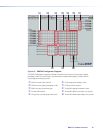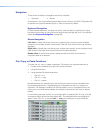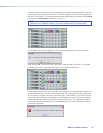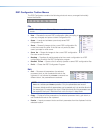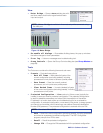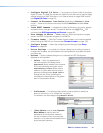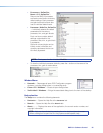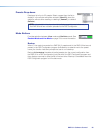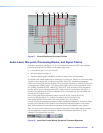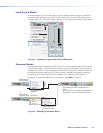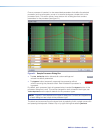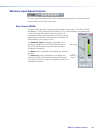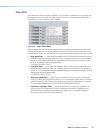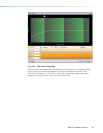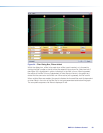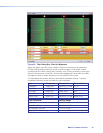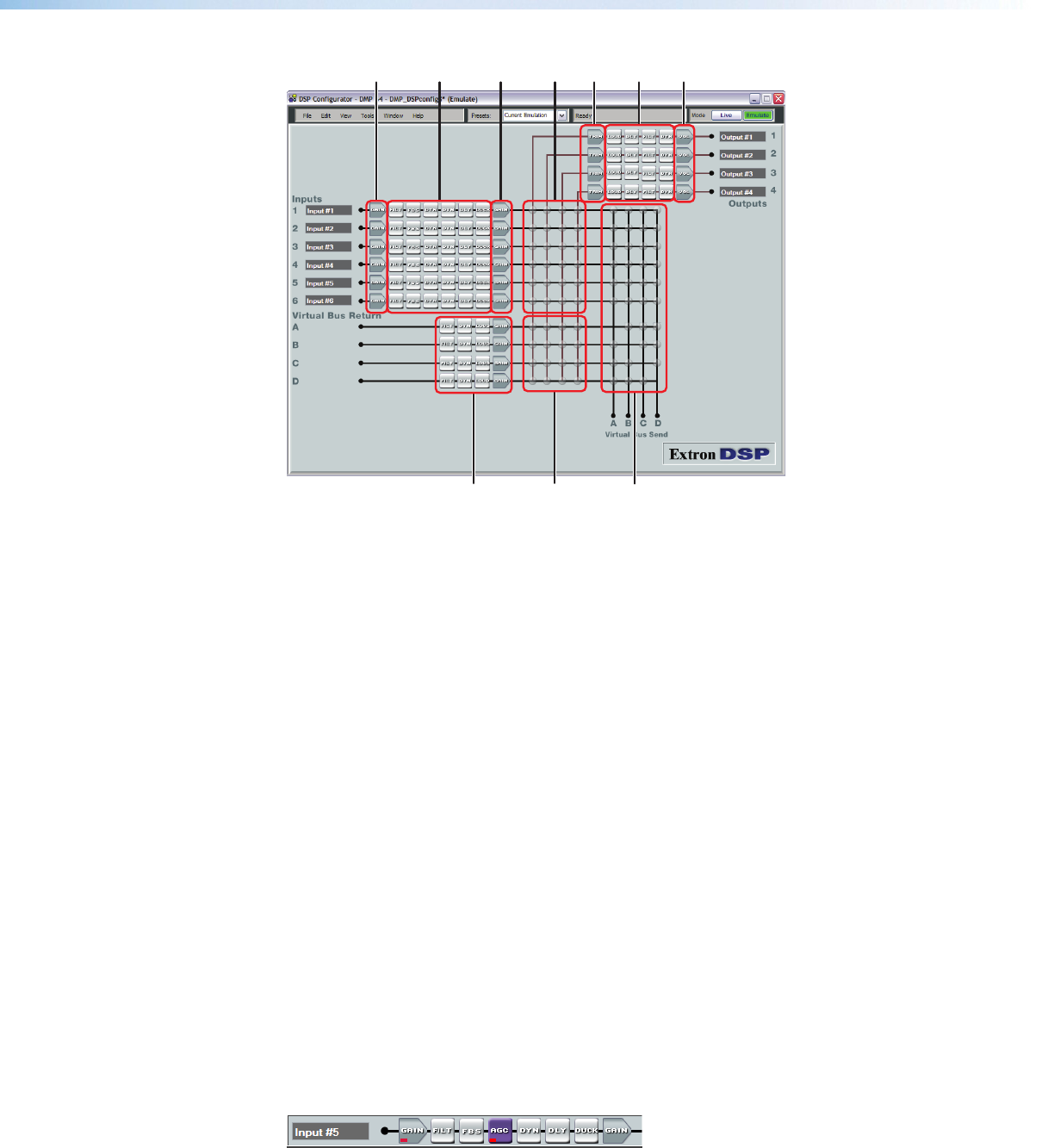
abcd
jhi
fge
Figure 17. Control Blocks and Processor Chains
Audio Level, Mix-point, Processing Blocks, and Signal Chains
Outlined in red above (see figure 17), all control blocks on the main DSP user interface
have one of three main functions in the overall signal chain:
• Level control (gain, trim, and volume),
• Mix-point (signal routing), or
• Signal processing (filter, feedback, dynamics, delay, duck, and loudness).
The signal chain varies depending on whether it is in the input, output, or virtual bus stage.
The input chain begins with a level control (GAIN), filter (FILT), feedback suppression
(FBS), two dynamics (DYN) and a delay (DLY) processor, followed by ducking (DUCK) and
a pre-mixer gain (GAIN) control. The output chain begins with a level control (post-mixer
trim [TRIM]), loudness (LOUD), delay (DLY), filter (FILT), and dynamics (DYN) processing
blocks, and an output volume control (VOL). Each virtual bus chain has a filter (FILT), a
dynamic processing block (DYN), loudness (LOUD), and output trim control (GAIN). All
mix-points have a gain control.
Each of the three signal processing chains; Input (
a
,
b
,
c
), Output(
e
,
f
,
g
),
and Virtual (
h
) (see figure 17), consist of a series of control blocks of two
basic types specific to that chain: level control (gain, trim, and volume
control), and signal processors (frequency filters, feedback suppression, dynamics, delay,
ducking, and loudness). Both types of control blocks are always present in the chains.
Gain controls default to unmuted and processor blocks are bypassed upon insertion.
Gain, trim and volume blocks can be muted and processor blocks (after being inserted)
can be bypassed for signal comparison. Mutes and bypasses are shown by a red
indicator in the lower left of the block.
Figure 18. Input Gain Control Muted, Dynamics Processor Bypassed
DMP64 • Software Control 27



